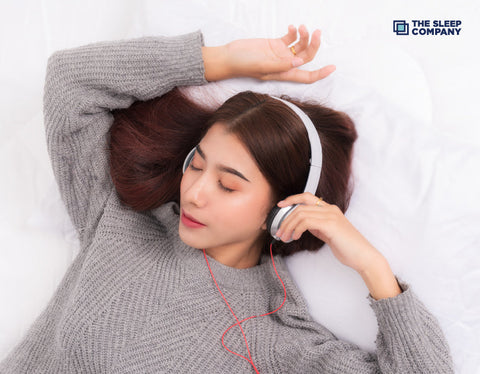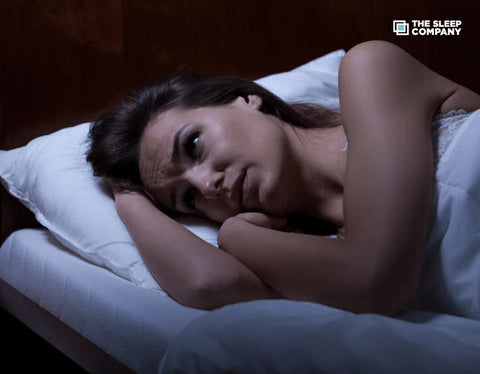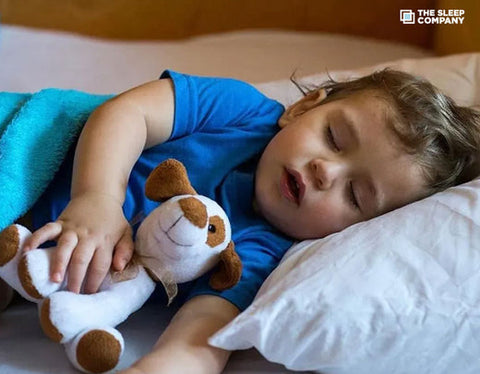My Cart

How to Create a Comfortable and Safe Sleeping Environment for Kids

As a parent, you are always looking out for your child. But what about their sleep?
When it comes to sleep, it plays a crucial role in their overall health and well-being. This is why creating a safe and comfortable sleep environment takes precedence.
It not only ensures deep sleep in your child where they enjoy much-needed rest but it also takes care of their safety.
So, how can you create a comfortable and safe sleeping environment for your child? Don't worry, we bring you hassle-free steps. Keep reading!
Easy Ways To Create A Comfortable and Safe Sleeping Environment for Kids
These easy-peasy steps will help you create a safe and cozy sleep environment so your little one can enjoy their slumber in peace. Let’s get started.

Choosing the Right Bed
When we say sleep, it is incomplete without a sturdy bed. And remember, selecting the perfect bed for your child holds the utmost importance when it comes to their safety and comfort.
First, the bed must be sturdy and meet safety standards. Even beds can become hazardous if certain precautions aren't taken.
For instance, loose or improperly installed bedrails can lead to falls, especially for younger children or those who toss and turn during sleep.
Also, beds with sharp edges or broken parts can cause injuries. Again, you don’t want to go for poorly constructed bunk beds without proper guardrails as they can lead to falls. That's why it is important to make it thoroughly safe before you make a purchase.
Next, consider the size of the bed. It should not only be right for your child's age and size but must also match the room's size. There must be enough space for your child to move around.
Mattress selection
A mattress is what gives that plush comfort and support that lulls your child into a good night's rest. Here, you need a proper mattress that fits the bed properly, with no gaps around the edges.
A good mattress is firm enough to support your child's body, but still comfortable to sleep on.
Check that it's made of safe materials and doesn't have any sharp edges. The mattress must be chemical-free like The Sleep Company's SmartGrid. But if you are still confused, take a look at the below pointers that can help you purchase the right mattress for your child.
-
Firmness
A medium-firm to firm mattress is generally recommended for children as it can provide the right support for their developing spine and ensure proper alignment.
-
Material
Look for mattresses made from safe and durable materials, such as SmartGrid, high-density foam, or coils with cushioning layers. Avoid mattresses with harmful chemicals or allergens.
-
Size
Go for the size of the mattress based on your child's age and size. A twin or double mattress is usually sufficient for most children. But go for something big if your child is already about to hit their teens.
-
Breathability
Choose a mattress with good airflow to avoid overheating, especially for children who tend to sleep hot. Breathable mattresses like the SmartGrid or latex can keep your child cool.
-
Hypoallergenic
If your child has allergies or asthma, go for a mattress with hypoallergenic properties to reduce the risk of triggering these allergic reactions.
-
Durability
Select a mattress that is durable and can withstand the wear and tear of childhood, including jumping and rough play.
-
Waterproofing
For younger children who may still be prone to accidents, a waterproof mattress protector can do wonders and keep the mattress clean and also extend its lifespan.
Bedding Essentials
Now we are done with bed and mattress, the two most important components essential to creating a comfortable and safe sleeping environment for kids. We can move on to the bedding essentials!
Start with a fitted sheet that securely covers the mattress. This is especially great for children as it prevents slips. Lightweight blankets or quilts keep them cozy without overheating.
Choose pillows mainly curated for children to support their heads and neck.
Now, we know, as a parent, you want to make the bed look inviting. However, avoid fluffy bedding or toys in the crib to prevent suffocation. Also, you never know what materials are used and if they emit any chemicals.
Waterproof mattress protectors are also a great addition as they can shield against accidents and make cleanup easy.
Finally, go for breathable fabrics. They help regulate temperature and reduce the risk of overheating. These are a few bedding essentials that you must be mindful of.
Temperature Control
The formula is simple. A cool room equals cozy sleep! So, when we say temperature control, we mean keeping your child's sleeping area not too hot or too cold.
Make sure the room is comfortably cool, around 68°F to 72°F (20°C to 22°C). When you dress your child in pajamas, make sure they aren't too heavy or too light, depending on the room's temperature.
Use blankets or quilts that provide just enough warmth without overheating.
Another tip you can use is that in warmer weather, you can lighter bedding and consider using a fan to circulate air. During colder months, add extra layers or blankets to keep your child cozy.
Lighting and Noise Management
Sometimes, simply switching off the lights and expecting your child to slide into a deep slumber will not help. You must take care of the light and noise aspects.
Some of the things you can try include:
- Dim the lights in your child's bedroom as bedtime approaches. This helps signal to their body that it's time to wind down.
- Install blackout curtains or shades to block out external light sources, especially if your child is sensitive to light.
- Use a dim nightlight to provide a sense of security without disrupting sleep. Opt for ones with warm, soft light.
- Avoid too much screen time and this includes TVs, tablets, or smartphones before bedtime, as the blue light emitted can interfere with the body's natural sleep-wake cycle.
- Use white noise machines or apps to create a constant, soothing sound that masks loud or disrupting noises and helps your child fall asleep and stay asleep.
- If your child is particularly sensitive to noise, you can use earplugs designed for children.
Proper Ventilation
Proper ventilation is imperative in order to create a comfortable and safe sleeping environment for kids. This is what you can do.
- If weather permits and you don't have to worry about mosquitos, open windows to let fresh air circulate in the room. This helps reduce stuffiness and promotes better air quality.
- Ceiling fans or portable fans can help improve air circulation, especially during warmer months. So, all you have to do is position fans well to avoid direct airflow on your child. You can try portable table fans here.
- You can use air purifiers with HEPA filters to remove allergens, dust, and pollutants from the air. This helps with better respiratory health.
- Make sure the air ducts and vents are clean and unobstructed to let air flow freely throughout the room.
- Maintain optimal humidity levels (around 30-50%) in the room to prevent mold growth and create a more comfortable environment. Dehumidifiers or humidifiers can help.
Creating a Relaxing Bedtime Routine
A relaxing bedtime routine helps your child wind down and prepare for sleep. It signals to their body and mind that it's time to relax and unwind after a busy day.
When you follow a consistent routine each night, your child learns to associate these activities with bedtime. So, it makes it easier for them to fall asleep.
A few things you can try include:
- Establish a regular bedtime and stick to it every night, even on weekends. Consistency helps regulate your child's internal clock. Infact, it will help you too!
- About 30 minutes to an hour before bedtime, begin activities that promote relaxation. This signals to your child's brain that it's time to prepare for sleep.
- A warm bath is one of the nighttime activities you can try as it can help relax your child's muscles and calm their mind. Use this time to engage in soothing activities, like playing with bath toys or gently washing their hair.
- Choose a few favorite books and read to your child in a calm, gentle voice.
- Soft, soothing music can help lull your child to sleep. Choose relaxing tunes or lullabies to play in the background.
- Give your child their favorite stuffed animal, blanket, or comfort object to cuddle with as they drift off to sleep. Make sure these items are safe.
- You can teach your child simple relaxation techniques, such as deep breathing.
Encouraging Independence and Comfort
While this is not directly connected to creating a safe sleeping environment, encouraging independence can build a sense of comfort in kids, and make them feel confident and secure.
Provide choices, like letting them pick out their pajamas or bedtime stories, and letting them make decisions. Create a cozy sleep environment with their favorite blankets or stuffed animals to ensure a sense of familiarity and comfort.
You can also teach your child simple self-soothing techniques, such as taking deep breaths or cuddling a comfort object, to help them feel calm and independent at bedtime.
Regular Maintenance and Inspection
Finally, never neglect regular maintenance and inspection of your child's sleep environment. Routinely check the crib or bed for any loose screws, broken parts, or sharp edges that could pose hazards.
Wash bedding regularly to keep it clean and free from allergens.
Blankets and quilts need washing at least once a month while sheets must be washed at least once a week. Make sure you also plan out a mattress cleaning routine where you sun dry it once every three months and offer deep cleaning once every six months. This helps maintain its hygiene.
Conclusion
Creating a safe and comfortable sleep environment for your child is essential for their well-being and development. But as you can see, it's not a tedious task. However, it all starts with the right mattress.
A proper mattress plays the main role when it comes to a comfortable and safe sleeping environment. It should not only be cozy and supportive but must also be chemical-free. This is where the SmartGrid mattresses by The Sleep Company come into the picture!
With innovative design, these mattresses promote airflow and temperature regulation to give your child a cool and comfortable sleep environment all night long. And, let's not forget, that there's no off-gassing like memory foam mattress as SmartGrids are made of hyper-elastic polymer. These chemical-free materials provide you peace of mind, knowing your child is sleeping on a safe and healthy surface.
There's more. The SmartGrid mattresses offer firmness when you need support and softness when you need comfort, making it easier for your child to enjoy a good night's rest.
Now is the right time to invest in quality sleep for your child with The Sleep Company's SmartGrid mattresses!


































































